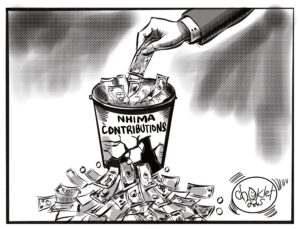JESUIT Centre for Theological Reflection (JCTR) executive director Fr Alex Muyebe says the upper tax band of 37.5 percent for income above K6,200 is still burdensome for most workers.
Speaking during a post budget analysis, Thursday, Fr Muyebe welcomed the upward revision of the non-taxable income threshold from K4,000 to K4,500 but noted that the upper band of 37.5 percent for income above K6,200 remained burdensome.
“The upward revision of the non-taxable income threshold from K4,000 to K4,500 is welcome as it will enable workers to have additional income; albeit at a low level for some segments of the population. The upper band of 37.5 percent for income above K6,200 however, remains burdensome for many workers. The JCTR BNNB does indicate a rising cost of living at the backdrop of high poverty levels and incomes averaging K4,000 as at the 2019 Labour Force Survey. For example, the cost of living in Lusaka has increased to over K8,000 i.e by over 24 percent since December 2019. The cost of living is least in Kasama at K4,304,” he said.
Fr Muyebe also welcomed the creation of 41,000 public sector jobs but questioned how the wage bill would be sustained once the SDR allocation was depleted.
“The creation of 41, 200 public sector jobs in 2022 is thus a welcome move given its impact on household incomes. Given the existing gap between employed and trained health and education workers, we request that this be sustained. The major question is, how will the wage bill be sustained once the SDR allocation is depleted? Or is the assumption that by then the economy will be doing much better than it is doing now? In the 2022 national budget, the government has prioritized support to the private sector and economic growth as key measures in addressing the challenge of unemployment that the nation faces. Incentives will therefore be provided to increase output and enhance production. This is a progressive move, given the high unemployment levels. But we wish to caution that economic growth does not necessarily translate into poverty reduction and enhanced development outcomes especially in the rural areas,” he said.
“The decade (2004-2014) was characterized by impressive economic growth, averaging 7.4 percent per year and Zambia subsequently achieved middle-income country status in 2011. Zambia has been characterized by urban centered development outcomes that have seen urban poverty significantly reduced over the last few decades. Poverty predominantly remains a rural phenomenon at over 60 percent. We also do note that while government is expecting the job creation agenda to be driven by the private sector, no clear target with regards to job creation by the private sector has been set. The enhanced visibility of public sector jobs in the Budget over private sector jobs remains a concern for CSOs given that government alone cannot address the high unemployment levels in the country especially among the youth.”
Meanwhile, National Action for Quality Education in Zambia (NAQEZ) executive director Aaron Chansa commended government over its plan to recruit 30,000 teachers, saying the move would be historical.
“Education is set to gain from the 2022 national budget in a number of ways. I think to start with, we must state that there has been a nominal increase in the education sector budget from K13.7 billion in 2021 to about K18.1 billion in 2022. And from that 18.1 billion, what has become famous is that the government is going to recruit 30,000 teachers. I must confess that since I was born I have never seen such kind of recruitment of teachers. This is going to be historical and I want to commend the government for doing that. We are also very happy that out of this 18.1 billion, a significant amount of money is going to go towards construction of 120 schools,” said Chansa.
“As Civil Society, we are happy that by scraping off of tuition and other user fees at Secondary level, indeed this will go down as a landmark policy in our Education history. And we foresee a number of learners who could not afford to go to school, getting into schools. We wish to highlight that a number of schools still have limited space for classrooms. More so, facilities expected to be found in schools such as laboratories, computer laboratories and libraries are either poorly equipped or non-existent. The lack of or limited secondary schools and the long distances pupils travel especially in the rural areas in order to get to school is commonplace. We therefore see the construction of an additional 120 secondary schools as timely.”
























